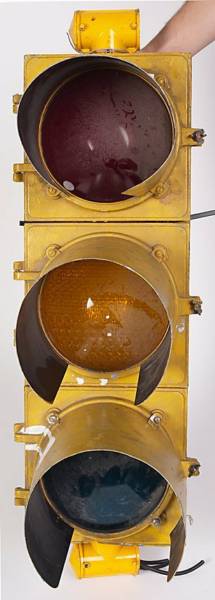Available via our sister-company,
The WellBeing Academy:
Consider it as an option to Medication or when maintaining a steady or as minimal medication-dose as possible is desired!
Biofeedback Is . . .
an Integrative Medicine or Mind-Body approach that can help you become more aware of your physiological response to stress, teach you how to reduce the effort your body puts forth in maintaining a chronic stress state and finally regain a level of relaxation that would be favorable for dealing with new stressors.
The body is made up of two different nervous systems: the central and the peripheral. The central nervous system consists of the brain and the spinal cord. The peripheral nervous system is basically every thing else. This system responds to external and internal stimuli. External stimuli are temperature, light, sound and other outside effects. Internal stimuli are anything related to your emotions, hormonal status and immune system. Traditional biofeedback is the measurement of your peripheral nervous system.
The peripheral nervous system reacts in many ways depending on the stimuli. Each reaction can be recorded on the biofeedback computer. The computer measures skin temperature, electrodermal activity, heart rate, muscle activity, respiration (Capnometry) and brain waves. Each time you come to a session, your trainer will hook you up to the computer using the appropriate sensors. Each of these sensors are connected to an amplifier which translates the data into information the computer will understand.
The information travels from the amplifier to the computer The computer assesses the information and turns it into readable images that enhance the biofeedback experience.
Before explaining the different modalities, their hookup procedure and their optimal goals, it is important to understand the flight / fight stress response. This response occurs when we are approached by a stressor. A stressor is anything that effects our homeostatic state.
Historically, stressors were such things as lions chasing us or sudden natural disasters. Today, stressors include work, traffic, health issues and relationship dynamics among many other things. Modern day stress is chronic. Our bodies were designed to handle the acute stress of the past. Once we overcame the stress, our bodies returned to homeostasis. Because today's stress is chronic, our bodies won't return to homeostasis and we may remain in the flight/fight state. It is subtle, yet it is exhausting to our system. Often it causes tension and migraine headaches, posture discomfort, muscle tension, elevated heart rate, depression, anxiety and brain wave irregularities.
Biofeedback sessions are designed to teach you what you can do to alleviate stress and pain symptoms and become more aware of what your body is doing at any time. It is important to practice the breath work and the relaxation exercises as often as possible between sessions. Before long, you should be able to enjoy doing the activities you love in a pain- and stress-free way. This work will build a foundation for more healthful habits and discourage the onset of chronic flight/fight existence.
Descriptions of The Modalities
Skin Temperature
A skin temperature thermistor is placed on one finger of each of your hands with medical tape (a stretchy medical tape that is breathable and adhesive to itself). The thermistor measures the temperature on the outermost or distal part of your body. (Actually your toes would be the most outer part, but this isn't as convenient as your fingers).
Why measure body temperature at your fingers or toes? In the flight / fight stress response your peripheral nervous system shunts the blood away from your extremities and into your brain, heart and lungs, to aid in optimum performance in order to eliminate the acute stress. Warm peripheral skin temperature most often means homeostasis. It is common to work with skin temperature for migraine headaches, stress reduction, hypertension, Carpal Tunnel Syndrome and other repetitive motion injuries and Raynaud's Disease.
What is the goal? The goal is to elevate your skin temperature into the low to mid 90*'s. When your extremities are warm, then the blood flow is balanced throughout your system. This is an indication that you're not in a flight / fight arousal state. This is excellent training for aborting migraine headaches.
Electrodermal Activity
The sensor for the Galvanic Skin Response or BSR (basal skin response) is an amplifier connected to two Velcro-banded resistors. These are placed around the tips of two adjacent fingers. They measure the conductance of moisture (sweat) on your hands skin surface. This modality is commonly known as a "lie-detector" test.
Why measure EDA? EDA is a measurement of eccrine sweat gland activity. When you become anxious, your eccrine gland system becomes aroused causing the glands to sweat. These glands are right under the skin of the palmar surface of your hands and feet. Sweaty palms are an indication of anxiety. We also train BSR for depression, sleep disorders, anger control, stress reduction and mind-body awareness
Heart Rate
The heart rate monitor is a device that is attached to the thumb or earlobe. It is called a photoplethsmometer. Through light detection, the PPM will will monitor the pulse of blood through your thumb or ear lobe from the pressure caused when the heart is beating. This feeds back the heart rate information. We also use the HeartMath EMWave, which can be rented or sold for home practice. The extra attention to your biofeedback practice will encourage a faster and more comprehensive recovery.
Why measure heart rate? The heart rate is useful when working on heart rate variability or HRV. HRV is the training method most useful in learning deep relaxation breathing. Heart resonance is the synchronization of the breath and the heart. When one achieves the highest state of heart resonance, he/she can mediate many of life's stressors in a way that is fundamentally more healthful. Heart resonance work is also helpful in determining causes of anxiety. Heart resonance or heart rate variability is also practiced for hypertension, mind-body awareness, stress reduction, depression, P.T.S.D, sleep disorders and meditation enhancement.
What is the goal? In RSA training you may learn to coordinate your respiration pattern with your heart rate. An even flow of the "hills and valleys" of your breath balanced with the heart rate results in optimal breathing for relaxation and in general life. There is no optimal heart rate level. However, most normal resting heart rates range between 45 and 80 BPM.
Capnometry
One of the most important functions of breathing is to exchange fresh new oxygen (O2) with the carbon dioxide (CO2) that is the byproduct of metabolism. Venous blood, which is rich in CO2, returns from the body through the heart and is then pumped into the lungs, where it is released. The oxygen that is inhaled replaces the CO2, which then travels through the heart and into the blood stream. This exchange creates an exhale that is rich in CO2. The measurement of CO2 released during exhale is called ETCO2 (end tidal CO2).
Why measure ETCO2? When optimally breathing the inhale / exhale flow of breath keeps a balance of O2 and CO2. However, most of us are not optimally breathing, causing such syndromes as hyperventilation or hypocapnia. This creates a reduction of the concentration of CO2 in the blood, and can cause constriction of the blood vessels in the brain and heart, and constriction of the smooth muscles of the lungs and gut.
Hyperventilation and Hypoventilation can also lead to dangerous shifts in blood chemistry. This causes a more alkaline blood pH, which increases cellular excitability, higher O2 demands, higher anaerobic metabolism and antioxidant depletion. It can also cause a higher migration of calcium ions into the muscle tissue, which will increase the likelihood of heart arrhythmias, muscle spasms, fatigue and pain. Hypoventilation increases the blood flow, hyperventilation decreases it.
When we over or under-breathe, we are effecting the amount of blood flow in the brain. Changes in flow will alter the functionality of the brain. Either may cause severe headaches or dizziness. Decreased blood flow may also cause an inability to think clearly.
What is the goal? During biofeedback sessions, one trains with a simple breath analyzer, called a capnometer. The capnometer is a small canula (tube) that is attached under the nostril. It measures the end-tidal CO2 (ETCO2) or volume of CO2 that is exhaled.
This device may be used either alone or coupled with heart resonance training (HRV). HRV-training, which includes a breathing gauge and heart rate monitor, will bring awareness to the client of his or her breathing patterns. Analyzing these patterns, which can often include bracing, holding, breathing too deeply or shallowly, interrupting the breath flow with frequent yawning and/or breathing at an inappropriate rate for the current activity, will literally through the feeddback show the client what patterns should be changed.
The biofeedback sessions will include a comprehensive training plan either individually or in a cost-effective group option to help the client redesign his or her breathing mechanisms, an opportunity to practice them, and a careful look into understanding why these breathing patterns were adopted in the first place.
Muscle Activity
The biofeedback computer is capable of measuring muscle activity through an electromyograph. The electromyograph (or EMG) is first hooked up to your trapezius muscles at the shoulder and at the sides of your forehead where your jaw muscle connects to your temporal muscle. These are two common sites for holding tension. We'll first prep the sites with alcohol. Then, in the case of the trapezius muscles apply sticky sensors. On the forehead, we place a round sensor covered with a water-based gel. The different types of sensors are necessary because the scope of the EMG signal we wish to receive is different on each of these sites. There are many other sites where tension is held, posture can be corrected or muscles can be reeducated. After the initial stress profile and/or interview, we can determine the best placements for optimum benefit.
Why measure EMG? When our muscles receive a message from a neuron to contract, either from our brain or as a direct reflex response from outside stimuli, the contraction lasts much less than a minute. It takes thousands and thousands of messages to fire neurons to maintain the contraction. This uses a lot of energy. That's OK if we’re firing neurons in order to maintain posture or hold something voluntarily. However, often, when we remain in the flight/fight stress response, since we keep our muscles contracted for extended periods of time, the contraction becomes forgotten, hence involuntary. This is often referred as sensory motor amnesia, or SMA. It can create unbalanced postures or muscle tone that is exaggerated. SMA and flight / fight states will cause muscle electrical amplification to be high. EMG training is excellent for reducing the symptoms of tension headaches, TMD and bruxism, hypertension, stress reduction, chronic pain and , repetitive strain injuries, Carpal Tunnel Syndrome and affords mind-body awareness.
What is the goal? The goal in EMG training is to lower the electrical amplitude. Since neuronal firings are essentially electrical impulses, the computer can calculate the measurement in microvolts, or uV. The goal for EMG training is generally between 1 - 3 uV during relaxation. This measurement indicates that there is very little electricity emanating from the muscles under which the sensors are located. Therefore there are no unnecessary contractions.
Relaxation Training
The Electromyograph, or EMG, strain gauge and heart rate sensors are used in relaxation training. The strain gauge is a velcro strip attached to the midsection just below the waist. It measures the difference in dilation and constriction when inhaling and exhaling of the diaphragm. It shows how deeply one is breathing. The heart rate and strain gauge together help to determine your normal breathing pattern and then train you into a more optimal one. The EMG sensors show where and when the painful muscle groups are relaxed and stressed. Often times, the feeling of relaxation is incongruent with what is actually occurring within the muscle group. This is because the stressful feeling becomes the norm. Through careful study and work, you will be able to notice and change when the muscles are tense and relax them. The lower-aroused state of the muscles will create a new homeostasis.
FAQs
*Is biofeedback reimbursable by health insurance? Most insurance companies are calling biofeedback or psychophysiologically- assisted individual therapy "Experimental**" and are denying reimbursement. This has worsened over the past few years and especially with 'health care reforms' now underway. Only a handful of diagnosis's are covered and these would require a prescription from your primary care-giver and submission under a medical vs. a behavioral health diagnosis. It's recommended you call your benefit provider and ask them what they need in order for you to be reimbursed.Consider the benefit of feeling and functioning better as your incentive to pay for this service out-of-pocket.
**Biofeedback has been around for 30-40 years. Research due to high equipment costs and learning curves have limited research, which is what insurance companies are citing: "Lack of evidence." Yet, if you ask an individual directly, as most of my client's attest, the insight they are afforded by this supportive therapy is immensely more effective. So each individual must decide if the value of biofeedback in accelerating your progress may be worth the out-of-pocket expense. A worthwhile consideration, especially if your symptoms have not responded to traditional therapy.
Also check out our educational division of services. We are designing it in response to health care changes and offering a more affordable, educational format to keep this effective service available for your benefit. See the "education" tab for details.
*How many sessions will it take? This is a hard question to answer because people come in for many different health problems. Stress reduction techniques generally take about ten sessions at 1 one-hour session per week. Other more complicated cases can take up to 30-40+ sessions.
*What is the time required per week for biofeedback to work? Biofeedback is a learning process, just like learning to play a musical instrument. The more you practice, the better you get at it. A one-hour session each week and about ten to fifteen minutes per day doing home practice is best for most cases. This practice can take place at work, in traffic, right before bed or in the morning.
*How do I get started? Call "L.A." and set up an interview. The interview takes about 1 to 1 1/2 hours. After assessing your needs, we'll perform a physiological stress profile. We can then begin the treatment.
*What does it cost? Biofeedback sessions may range in cost relating to modality. Your insurance may also cover some of the cost. Call for information based on your needs. If self-pay, prepayment discounts are available.
* Biofeedback and Neurofeedback are considered experimental by the American Medical Association.
Resources
Biofeedback and Somatics, Toward Personal Evolution; Eleanor Criswell, EdD, Freeperson Press ISBN 0-918236-06-1
Psychophysiology, The Mind Body Perspective; Kenneth Hugdahl, Harvard Univ. Press ISBN 0-674-72207-8
Psychophysiology, Human Behavior and Physiological Response 3rd ed; John L. Andreassi, Erlbaum Associates ISBN0-8058-1104-4


body-physiology matters
kFor Questions and to Schedule your first Appointment,
Call
832.632.8118


